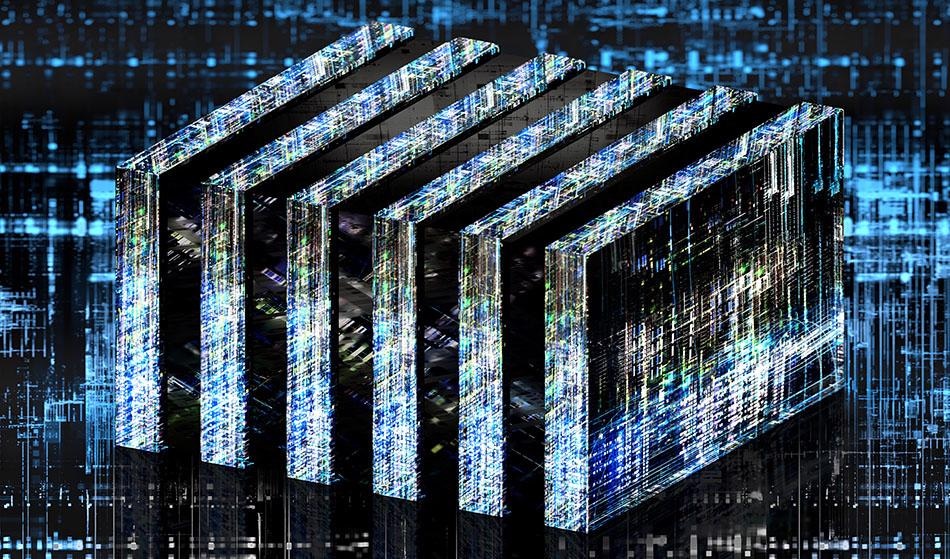
plotplot / Shutterstock
Metrology – the science of measurement – has progressed rapidly in recent decades thanks to developments in our understanding of quantum mechanics. In quantum mechanics, the conventional laws of classical physics are turned on their head, and peculiar effects become observable at the quantum (smallest possible) scale of size.
In particular, surface metrology – the study of measurements on the surface of physical objects, such as their primary form (overall shape), fractality (changing patterns at each level of detail) and roughness (deviations from the vector of their ideal form) – has benefitted from techniques exploiting the quantum mechanical effects of quantum entanglement and quantum squeezing.
These new techniques have introduced a new generation of highly precise and detailed measurements to the field of surface metrology, but another area of quantum information science also promises to help rapidly advance the field of surface metrology in the near future: quantum computing.
Quantum Computers
Put simply, quantum computing replaces the binary units (bits) with which classical computing logic is built with quantum units (qubits). These qubits are given by various techniques in various materials achieving quantum particle states. Once a usable qubit is achieved, it has advantages over classical bits that can only come from the mysterious and peculiar laws of quantum physics. For example, the superposition of quantum particles means that qubits can occupy both a negative and positive state at once, allowing for parallel computation and much faster processing speed.
Quantum supremacy, the theoretical future period, in which a quantum computer can be shown to complete any computing process faster than a conventional classical computer could, has not been realized yet. But as the research and funding goals of many scientists, technology companies and government agencies working today, it may only be around the corner.
Once quantum supremacy is achieved, then surface metrology will advance rapidly due to the exponentially faster and more powerful processing ability it will bring. Below are just a few examples of the potential applications of working quantum computers in the field of surface metrology.
Improved Modeling
Quantum computers could produce computer-generated models of materials that far outstrip the computer models we use today in terms of precision and accuracy. This greater level of detail in models will allow surface metrologists to study the minute variations in different material’s surface forms, enabling a greater understanding of those materials’ features and far fewer margins of error in predicting how they will behave in interactions with other materials and energetic forces.
Electromagnetic Behavior Analysis
Quantum computers could be uniquely able to model (as above) and measure the electromagnetic behavior of various materials, including new ones created through experimental chemistry. This is due in part to their improved processing power, but also to their unique quantum abilities to process and compute the peculiar quantum effects of particles such as electrons, which can become entangled or be superpositioned like the qubits that make up a quantum computer’s logic.
This would allow surface metrologists to find more accurate values for various constants in physics, in turn enabling greater levels of precision in materials science in general.
Artificial Intelligence and Rapid Prototyping
Quantum computers promise to usher in rapid advances in the field of artificial intelligence (AI). Machines driven by their more powerful processors will be able to learn from previous iterations of their programs and reprogramme themselves infinitely, and quickly. In surface metrology, this will lead to new materials being modeled and prototyped within the computer, and useful data about the minuscule variations in their surfaces can be quickly provided to researchers.
Fractal Geometry
Fractal geometry – in which patterns in nature can be observed as repeating and growing in complexity with progressive stages of magnification – has been the cause of much media hype in recent years, but it is difficult to analyze and study on the microscopic level given the fact that each smaller layer of scale is harder to observe. Quantum computers could overcome this difficulty by, as above, modeling surfaces to a far greater degree of detail than classical computers are capable of. In this way, surface metrologists will gain a greater understanding of even the subatomic levels of size and the patterns that make up our universe.
Disclaimer: The views expressed here are those of the author expressed in their private capacity and do not necessarily represent the views of AZoM.com Limited T/A AZoNetwork the owner and operator of this website. This disclaimer forms part of the Terms and conditions of use of this website.